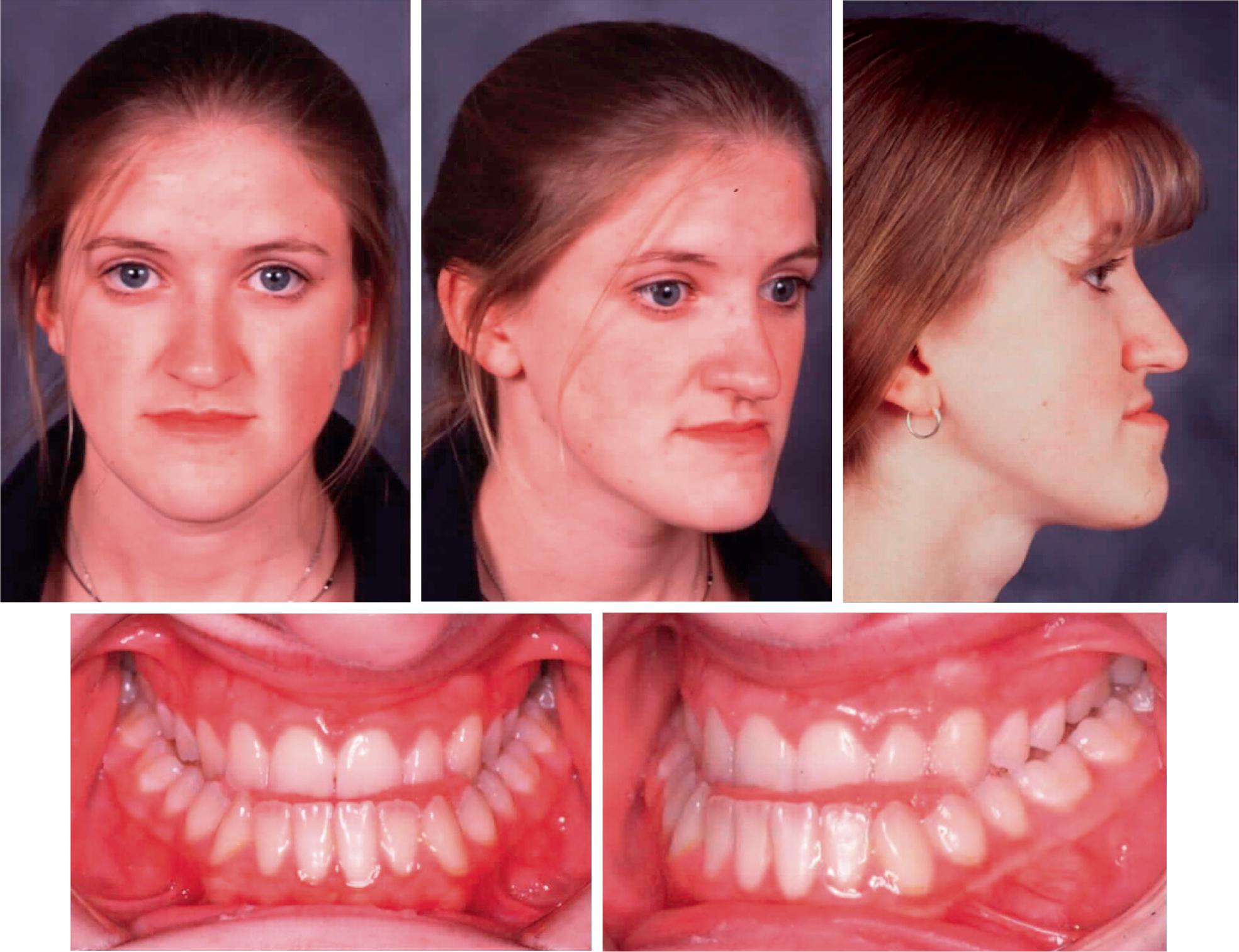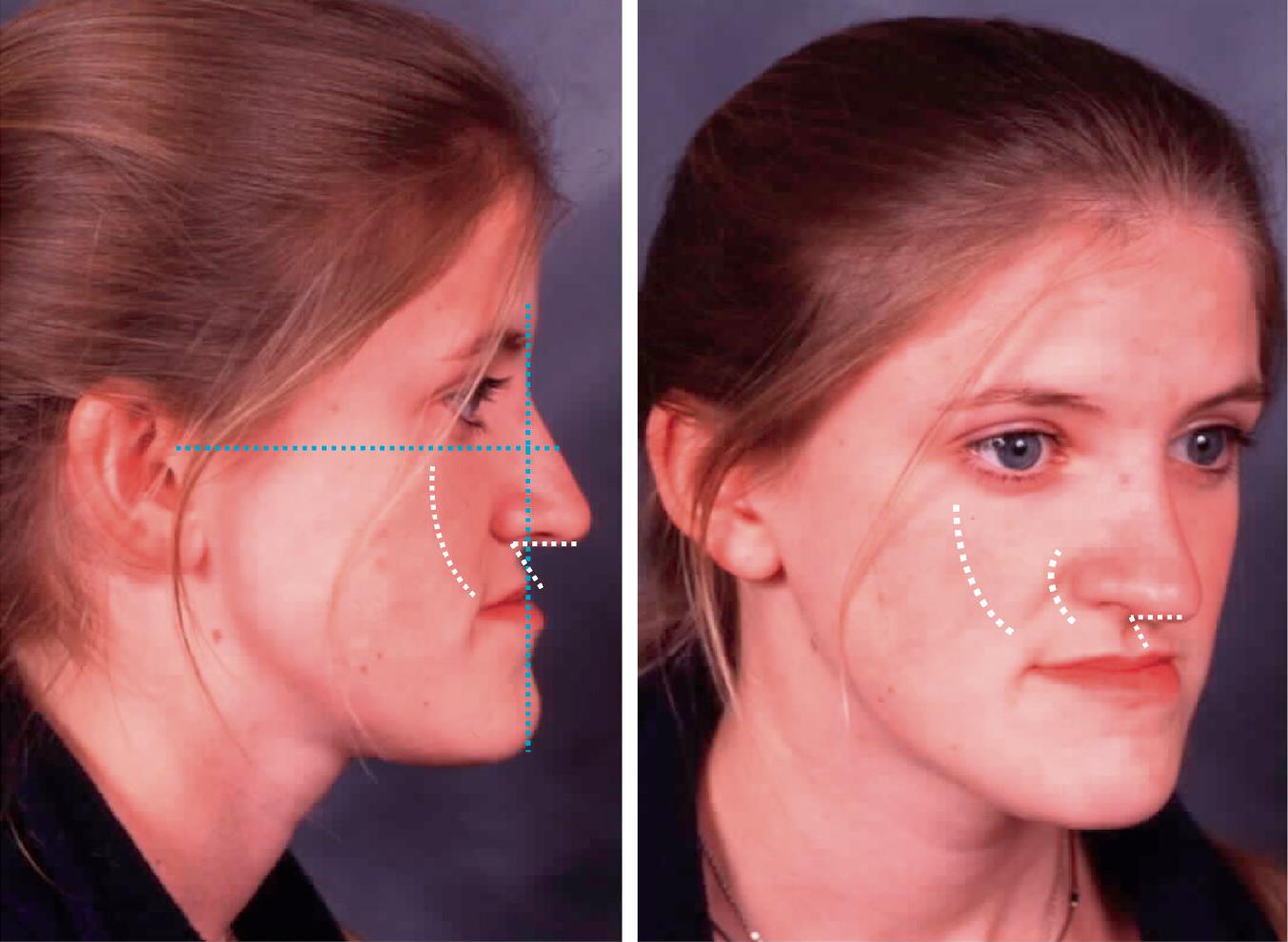Physical Address
304 North Cardinal St.
Dorchester Center, MA 02124
Among the essential procedures in the surgical armamentarium of an aesthetic maxillofacial surgeon is sectioning and repositioning of the midfacial skeleton. The versatility of the LeFort I surgery and its variations allows the surgeon to correct a broad spectrum of midfacial skeletal abnormalities. The maxilla forms the most central portion of the facial skeleton and contributes significantly to the overall aesthetic appearance of the face. Deficiency or excess of the maxilla in the vertical or sagittal dimension can profoundly affect midface concavity/convexity, the occlusal plane, dental and gingival show, the smile arc and lip support, nasal dorsal prominence and nasal tip position. The spatial position of the maxilla relative to the cranial base and its counterpart, the mandible, can therefore have a significant impact on facial aesthetics and dental occlusion. This chapter focuses on the surgical techniques for repositioning the maxilla to restore and enhance aesthetic and dental harmony.
Abnormalities of the maxilla in the vertical dimension may include deficient maxillary height. This results in decreased show of the anterior teeth, counterclockwise rotation of the mandible, and associated soft tissue changes that result in a prematurely aged look to the face. Vertical maxillary excess can produce excess show of the anterior teeth and an undesirable, gummy smile. The excess height of the maxilla also results in clockwise rotation of the mandible and associated soft tissue changes, such as lip incompetence, mentalis strain, and a retruded chin.
Abnormalities of the maxilla in the anteroposterior, sagittal dimension may result in negative or excess overjet if there is deficient or excess sagittal projection of the maxilla, respectively. Maxillary deficiency in this dimension also results in an acute nasolabial angle, nasal dorsal prominence with a depressed tip and narrow alar base, decreased dental show with smiling, concavity of the midface, perceived relative prognathism, and a short retrusive upper lip with thin vermilion.
When asked about their appearance, patients frequently describe their concerns in terms of the mandible. It is not uncommon for a patient with a class III facial skeletal pattern to request setting back the mandible ( Fig. 20.1 ). The clinical clues that the surgeon needs to point out to the patient with maxillary deficiency include the acute nasolabial angle, nasal dorsal prominence with depressed nasal tip, lack of dental display, shallow piriform region, and midfacial concavity. When reviewing photographs with the patient, it is the three-quarter oblique view that best shows the midfacial concavity, which can extend to involve the zygoma ( Fig. 20.2 ). Even when the primary deformity is in the mandible as in “true” mandibular excess and prognathism, maxillary advancement should be considered to improve the overall aesthetic appearance because it expands the facial skeleton to accommodate the soft tissue envelope, thus countering prematurely aged appearance associated with skeletal contraction. Mandibular surgery combined with maxillary surgery often improves postoperative stability and improves the aesthetic outcome. Thoughtful clinical examination without skeletal radiography will, in most circumstances, appropriately define the maxillary and mandibular components to optimize the aesthetic outcome. However, dental models and radiographs become essential in detailing the surgical–orthodontic plan to optimize the skeletal aesthetic outcome and occlusal function.


Evaluation includes the facial soft tissue, the skeletal bases, dental occlusion, and the position of the dental arches relative to that of the lips. The respective heights of the upper, middle, and lower face should be noted. Facial convexity or concavity should be assessed. The frontonasal angle, nasal length, columella height, and nasolabial angle should be determined. Smile analysis should be performed to determine the lip height at rest, the smile arc and lip dynamics, lip competence, and the presence of mentalis strain. The incisal edges of the maxillary dentition should ideally follow the lower lip (smile arc). The molar and canine relationships of the maxilla and the mandible should be assessed relative to the goals of optimizing the skeletal appearance. Thus the degree of the overjet, overbite, incisor inclinations, and occlusal plane angulation should be carefully assessed by both the surgeon and the treating orthodontist to optimize the facial and occlusal aesthetic appearances.
Become a Clinical Tree membership for Full access and enjoy Unlimited articles
If you are a member. Log in here